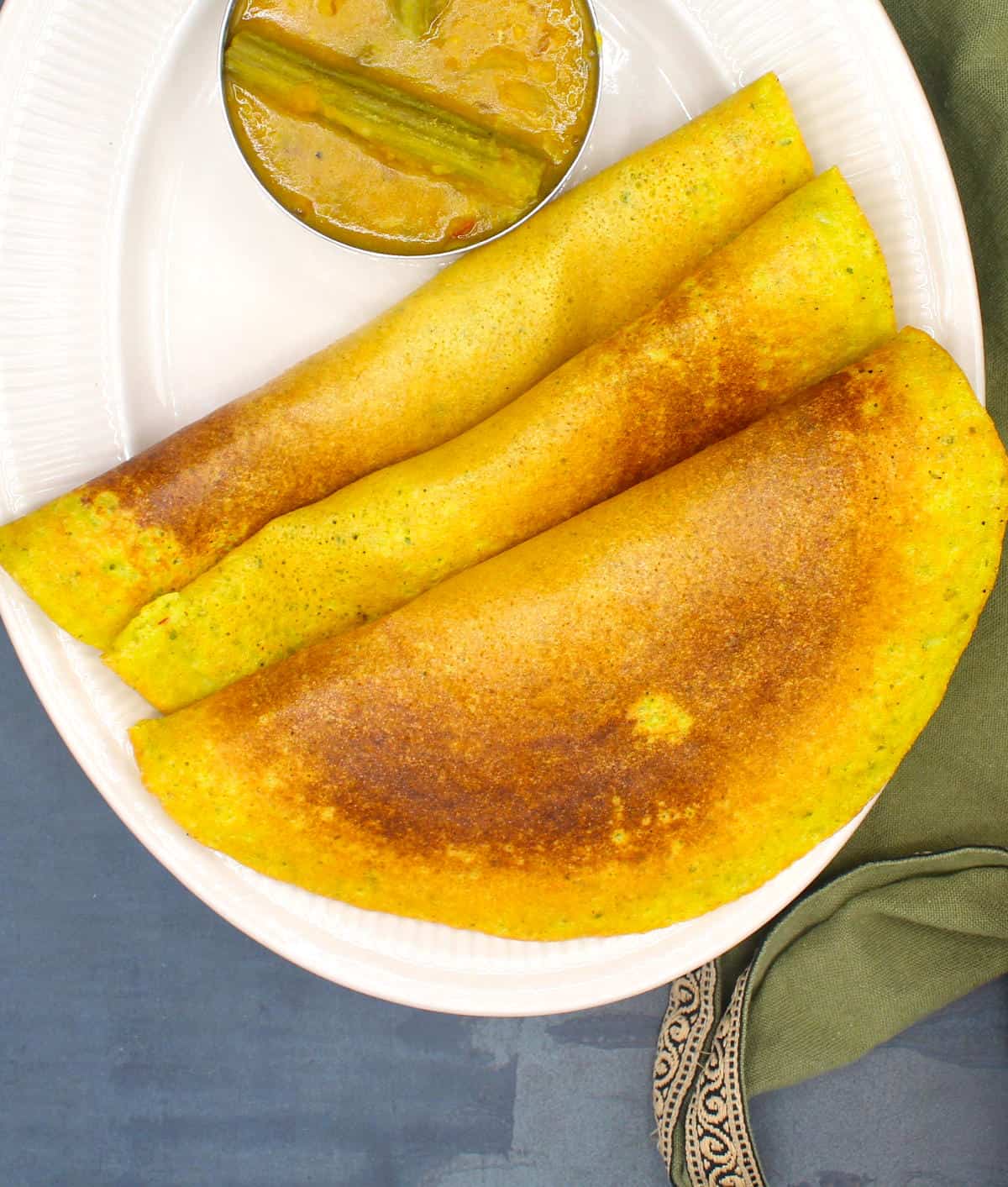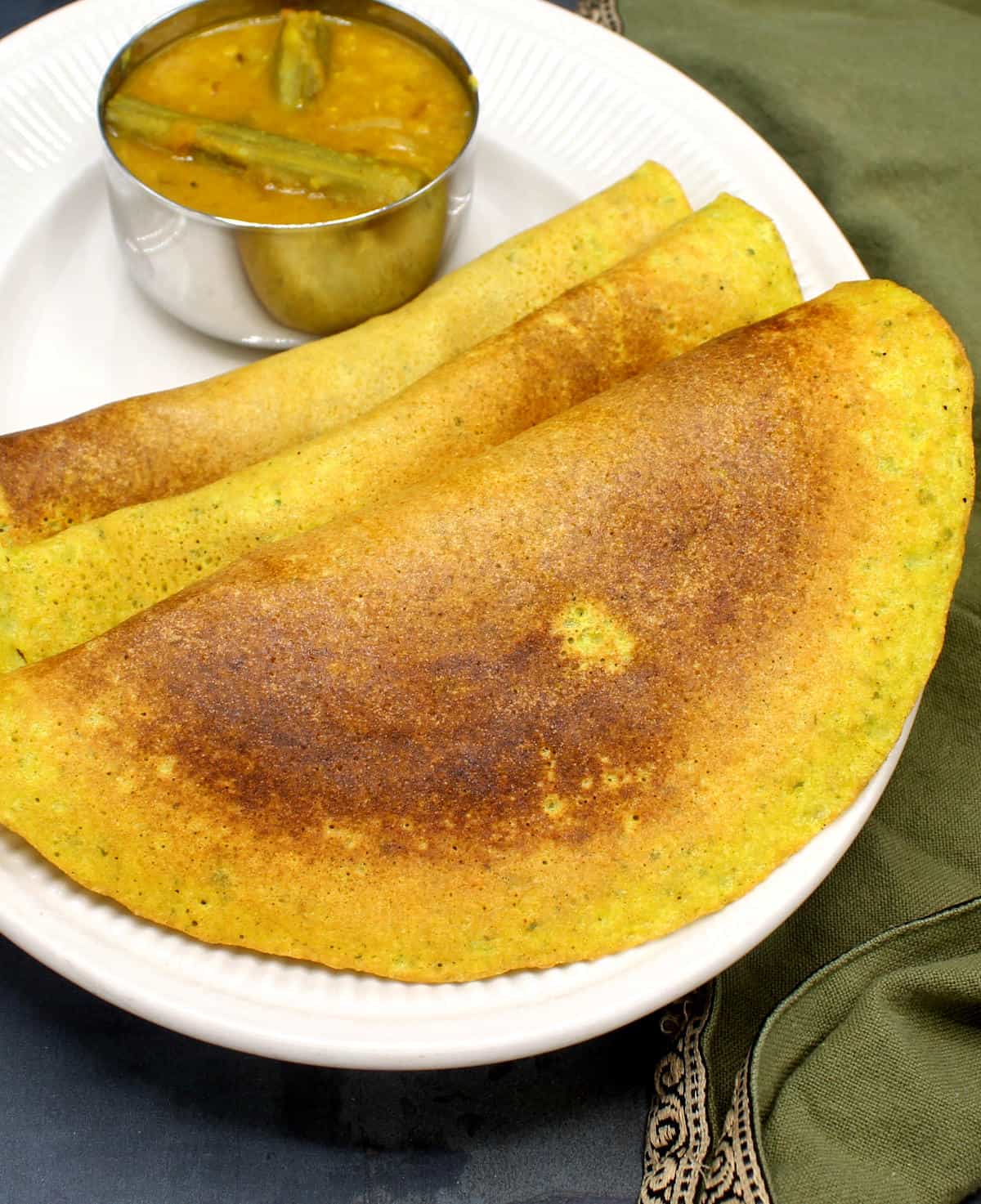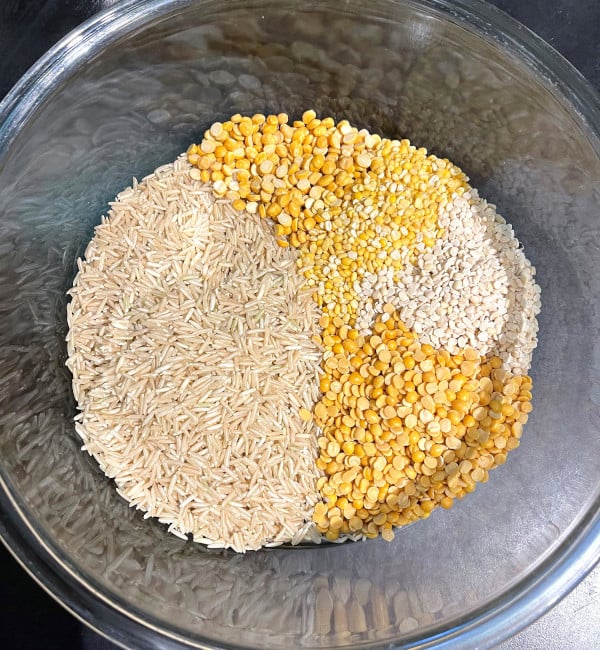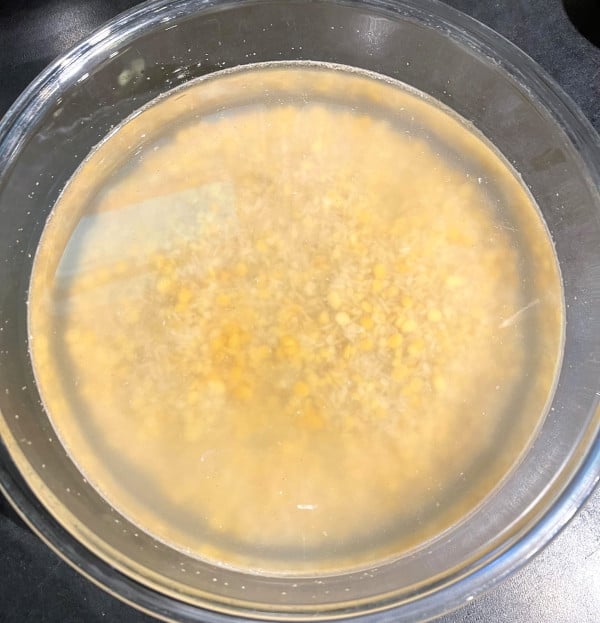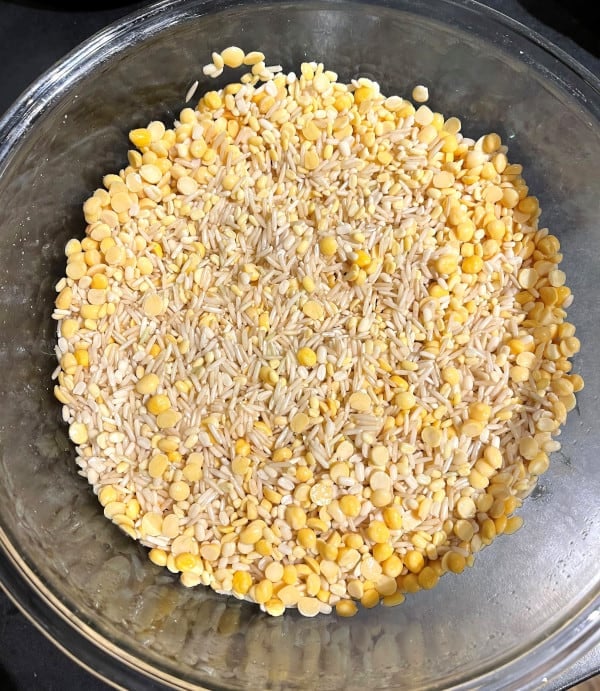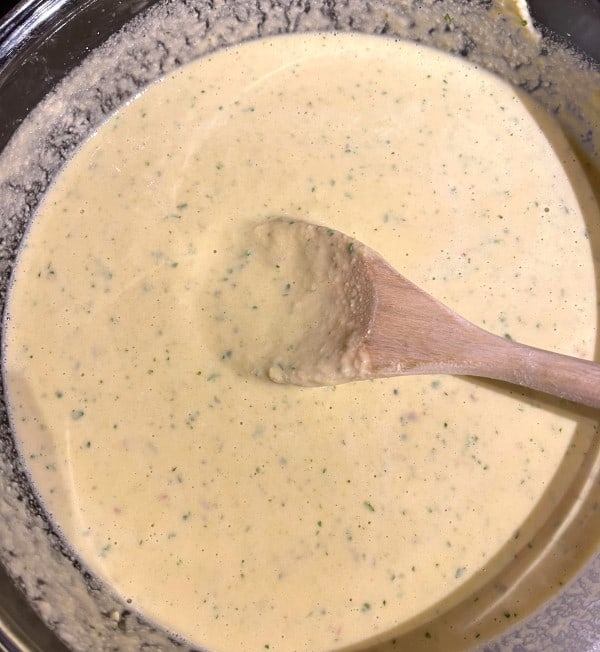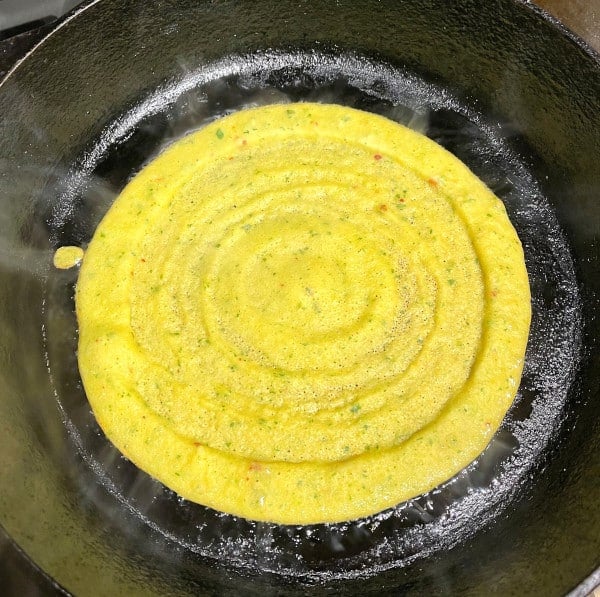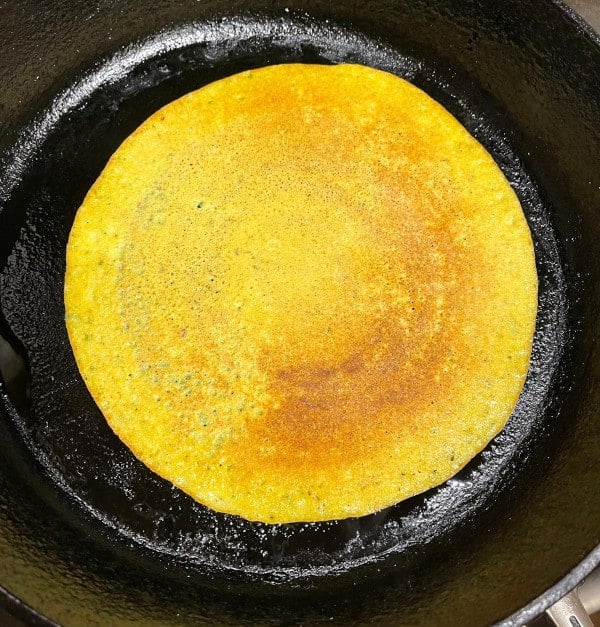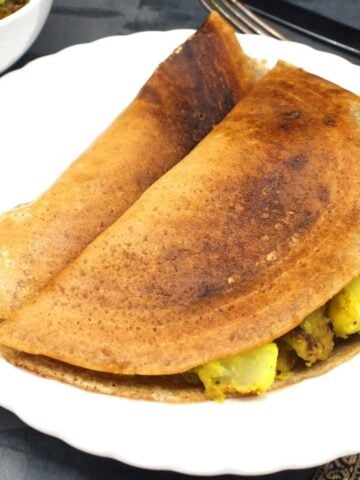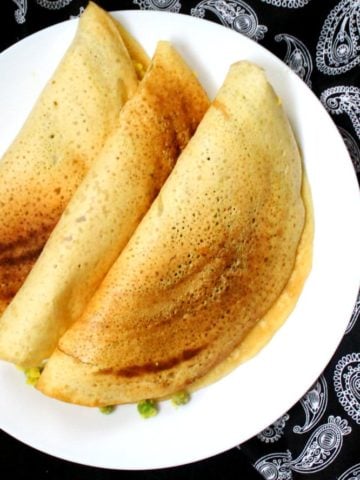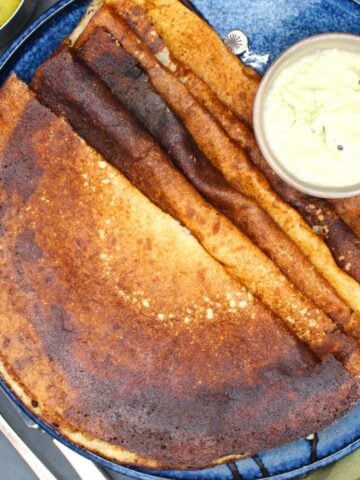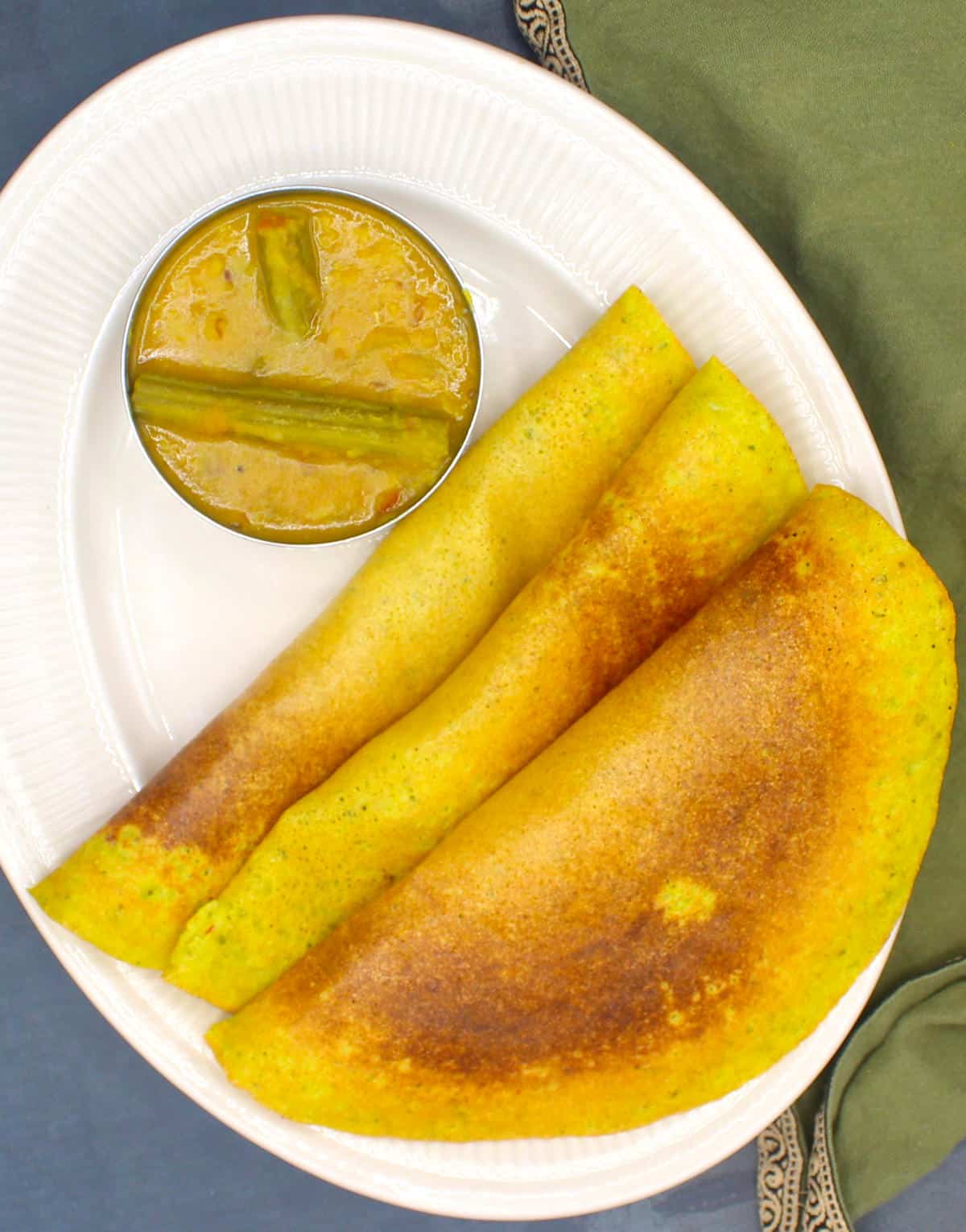Adai (pronounced ud-a-yee) was one of the first foods I tasted in my Tamil mom-in-law’s kitchen. It became an instant favorite. Unlike its simpler but yummy counterpart, a plain dosa, an Adai is a star, hiding complex flavors beneath its lovely, golden skin. It is also, in my opinion, a little more fun to cook because it lets you play around quite a bit with the ingredients so you can make your own special version suited to your own special tastes. Cooking Indian food can appear intimidating, especially if you’re not used to it, but foods like an Adai, although exotic-appearing even to some Indians, couldn’t be easier to make. All you need to do is begin. I hope you will, and if you do, I’d love to hear!
Why you’ll love this adai recipe
It’s delicious. It’s extremely healthy. The base ingredients for adai are rice and lentils and you get to add all sorts of herbs and veggies to this recipe. It’s easy. Really. The only part of making an adai that could require some practice is spreading out the dosa on a hot griddle, because there’s a specific, although simple, technique involved. And it’s okay if your adai doesn’t look perfect the first few times, it will still taste great. It’s super kid-friendly. Jay can snack on a stack of adais on their own, although he loves them best when I serve them with a bowl of sambar or with coconut chutney. It’s versatile. You can add veggies to your adai, or leave them out. You can turn your batter probiotic, like you would a regular dosa batter, or eat as is. There is no end to the customizations you can make to your base adai batter.
How to make adai
Soak the rice and lentils with water to cover by two inches and leave alone for at least three hours. You can even soak them overnight, if that works better for you. If you plan to ferment your adai batter add half a teaspoon of fenugreek seeds to the batter. Drain the water and blend the rice and lentils with water in a high-powered blender until smooth but still very slightly grainy. What this means is you should be able to feel very fine (not large) particles of the rice when you rub the batter between your finger and thumb. This is critical to the texture of the cooked adai: if you blend the batter too smooth, the adai will be soft rather than crispy. If you make it too grainy, you can’t really shape it into a round on the griddle. This might be a little difficult to nail down at the first try but you’ll get the hang of it in time. Check to get new recipe updates by email.
Add the veggies and herbs and spices and process. Make sure you chop the ginger and cilantro so everything breaks down evenly. You don’t want to puree the herbs, you just want them to break down until specks of the herbs are still visible in the batter but they are not in large pieces. The batter, in the end, should have a pourable consistency but should be slightly thinner than, say, a pancake batter, but it should be thick enough to coat the back of a spoon. A thicker batter would make thicker dosas. Add water, a little at a time, to the batter, if needed, until you get the right consistency. The batter should be thin enough that you can pour it on the griddle and shape it quickly into a larger round. Heat a griddle. Your griddle should always be really hot before you add the dosa batter to it. Use a well-seasoned cast iron griddle, as I do, or a nonstick skillet. The reason your griddle needs to be hot is that you cannot and should not oil the griddle before you add the batter to it, the way you would do if you were making a pancake. If your griddle is not adequately hot when you add the batter to it, the batter will stick to it. Oiling the griddle might seem like an easy solution but it would be impossible to spread the dosa into a crepe on an oiled surface, and the batter would just clump together. A good rule of thumb is to heat the griddle, then sprinkle a few drops of water on it (carefully). If the water sizzles and evaporates immediately, your griddle is at the right temperature and you can add the batter to it. Make the adai dosa. Use a rounded steel ladle to scoop out the batter and pour it on the hot griddle. Quickly, using the bottom of the ladle, spread the dosa into a bigger round in circular motions moving outward. This takes a little practice and if you don’t get it exactly right don’t fret. I’ve attached a short video in the recipe card that shows you how to do this, and you will get better as you practice. You can also just make the adais smaller until you get better at shaping them. Serve the adai hot: Adai should always be eaten hot because that’s when it’s at its crispiest best. You can store any unused batter in the refrigerator and use it as needed. It will keep for about three days.
More vegan dosa recipes
Recipe card
